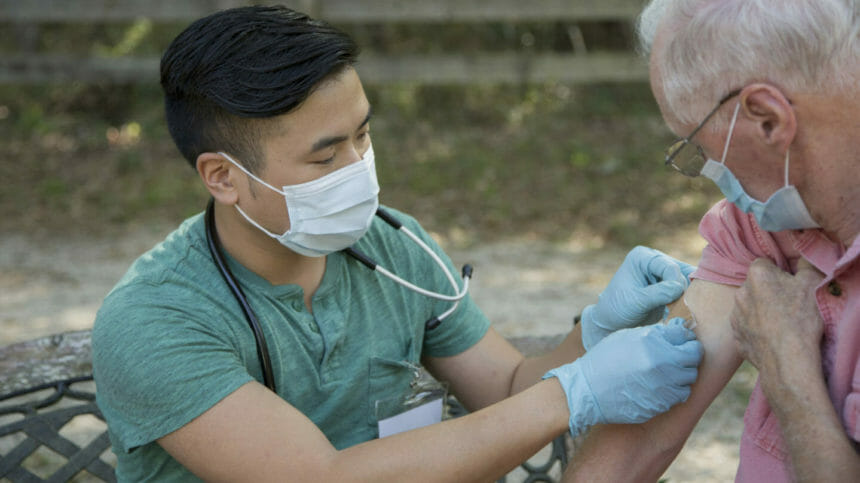
Despite a year that saw more than 171,000 nursing home residents and caregivers die from COVID-19, providers are now celebrating their latest victory in the battle against the virus.
“What a tragic year it has been. By far, the most difficult year in the history of the long-term care sector,” Mark Parkinson, president and CEO of the American Health Care Association/National Center for Assisted Living, reported Tuesday. “There is good news and that news is that this nightmare may be ending.”
Parkinson’s comments came during a teleconference hosted by the association to mark the one-year anniversary since the COVID-19 was recognized in U.S. long-term care.
The sector has enjoyed an 82% decline in weekly coronavirus cases among nursing home residents since peaking in mid-December, when nearly 33,300 cases were reported the week of Dec. 20.
A new low of about 6,000 weekly new cases was reported during the week of Feb. 7, federal data shows. COVID-related deaths have declined 63% since that then.
“It’s obvious that the vaccines have been working [and] that the decisions to prioritize residents and staff for vaccines were good ones,” Parkinson said.
He also noted that it appears states have hit the March 1 target the association set in challenging governors to complete all LTC facility vaccinations.
Federal data shows that about 4.6 million first doses and 2.5 million second doses have been given thus far to residents and staff in long-term care facilities. There are approximately 5 million residents living in nursing homes and assisted living, and 1.5 million people working in nursing homes, according to AHCA/NCAL.
The progress is all the more reason why “it’s time to allow visitation [and] time to let activities occur,” said AHCA/NCAL Chief Medical Officer David Gifford, M.D.
He added that the association is encouraging the Centers for Medicare & Medicaid Services and Disease Control and Prevention to “to look at the data on the dropping cases, look at what’s going on with the dropping cases and determine when it’s safe to reopen and when it’s safe to get back to the activities.”
The association, along with LeadingAge, also has set a new target of getting 75% of staff vaccinated by June 30. They plan to hit their goal through town hall meetings, identifying best practices, and by targeting its messaging and resources to facilities with low staff uptake.
“It is incredibly important that we continue to keep our focus on this program, that residents and staff continue to be at the highest priority, and that the states and federal government stay vigilant in making sure that adequate supply and administration of the program can continue to run smoothly,” Parkinson said.





